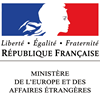Leonard Vinci 500 years later, the Renaissance man who combined art and science

Musée du Louvre, Leonardo da Vinci - The Virgin and Child with St. Anne (1498) - Detail I
To mark the 500 year anniversary of Leonardo da Vinci’s death at Amboise in France, the Louvre is holding a major retrospective of the artist’s work and life.
Driven by an insatiable curiosity, Leonardo da Vinci undertook a great deal of scientific research in order to recreate the real world through painting. Leonardo da Vinci trained with Andrea del Verrocchio, the leading Florentine artist of his time. In the great artist’s workshop, da Vinci studied the effects of light on sculptures in order to give the illusion of volume in his paintings, finding that space and form are rendered by light. His drapery studies demonstrate his work on light and shadow as well as the chiaroscuro technique.
Throughout his life, da Vinci constantly observed and studied nature through various disciplines, including geometry, architecture, cartography, hydraulic engineering, botany, and anatomy. The ultimate Renaissance man, his research is recorded in his notebooks and sketches. Based on his study of optics, he perfected the “sfumato” technique; superimposing an infinite number of layers and shading without lines or borders to achieve a lifelike effect.
Constantly seeking the support of patrons, Leonardo da Vinci worked for the Sforza family of Milan, the Republic of Florence, the Este family of Mantua (producing a magnificent portrait of Isabella d’Este), the Republic of Venice, the condottieri Cesare Borgia, and Giuliano de’ Medici, before finally accepting King Francis I’s invitation to move to France in 1516. Da Vinci took three masterpieces with him: the Virgin and Child with Saint Anne, the Mona Lisa and Saint John the Baptist, all showcasing the culmination of his work on the sfumato technique. The Mona Lisa was acquired by Francis I before da Vinci’s death.
For Leonardo da Vinci, scientific research was an instrument in his quest to represent the real world and capture movement, the ultimate representation of all life. He never stopped refining his paintings, never truly finishing them as he strived for the impossible – perfection. The unfinished painting embodies the natural result of a living, ever-evolving art.
By Dauphine de Schonen - Musée du Louvre








